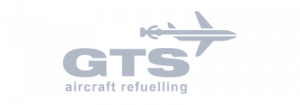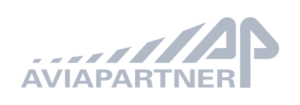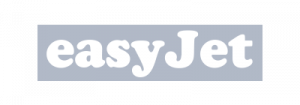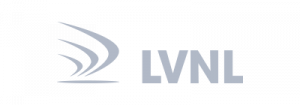Follow-up to the Dutch Safety Board’s recommendations
The Dutch Safety Board published a report on Schiphol’s aviation safety in April 2017. In this report, recommendations were made in order to address the identified safety issues.
The ISMS sector parties work together to follow-up on the Dutch Safety Board’s recommendations. The Schiphol Safety Improvement Roadmap contains, but is not limited to, the studies and measures which are necessary to implement the Safety Board recommendations. Depending on the results of the studies and outcomes of ISMS investigations, new additional measures that contribute to the follow-up of the Dutch Safety Board’s recommendations will be added to the roadmap.
In March 2020, Kwink Groep and To70 were commissioned by the Ministry of Infrastructure and Water Management (I&W) to evaluate the implementation of the Dutch Safety Board’s recommendations based on their review of air safety at Schiphol.
(Link: https://www.rijksoverheid.nl/documenten/rapporten/2020/03/30/bijlage-2-evaluatie-implementatie-aanbevelingen-ovv-kwink-groep-en-to70)
Among the conclusions of this evaluation, they stated: “It can reasonably be expected that the measures that have been implemented and planned will effectively reduce the safety risks reported by the Dutch Safety Board (recommendations 1 to 3). Moreover, with the introduction of the ISMS there is now a process to effectively reduce these and any new safety risks.”
In February 2022 To70 and Stratagem Consulting performed a second evaluation the Dutch Safety Board’s recommendations, commissioned by the Ministry of Infrastructure and Water Management (I&W). Download tweede-evaluatie-implementatie-ovv-aanbevelingen.pdf
Among the conclusions of this evaluations, it is stated “In 2021 we concluded that since 2019, a huge progress has been made and the majority of these measures are completed and implemented in the organisational policy of the sector parties and the government.”
The concrete steps taken for each Dutch Safety Board recommendation will be detailed below.
Please click here to read the full text of the recommendations
You can expand the sections below for more details.
1. Develop a new future-proof operational concept for handling air traffic at Amsterdam Airport Schiphol that will reduce current and future safety risks.
The development of the operational concept is taking place in conjunction with the Ministry of Infrastructure and Water Management, airspace users, the military, local residents, European partners and other stakeholders. The operational concept describes how humans, technologies and procedures are used to handle traffic at Schiphol. It is developed in a number of programmes in which the sector actively participates:
- The development of the Aviation Policy (Luchtvaartnota), 2020-2050
- Airspace redesign project, design phase in period 2021 until 2022/2023
- Deployment of European SESAR technology, between 2014 – 2026.
Changes to the operational concept are implemented in a number of smaller steps. Each step will be deemed safe prior to implementation, including their aggregation.
The sector is currently working on a number of structural elements to improve safety under the new operational concept, which include:
In progress
- Colocation towing movement and ground control
- Deviations by ground handling staff
- Display of “STOP” on inactive docking guidance systems
- Follow the Greens
- Improve Pedestrian Safety
- One runway, one frequency, one language (OROFOL)
- Pushback support tool
- Sharing ground equipment and vehicles
- Stop bar 24h
Implemented
Evaluated
- Check pushback procedure online
- Double guidance lines to the Alfa taxiway
- Double guidance lines to the Bravo taxiway
- Electronic flight strips
- Ground handling adverse weather procedure
- Increased upper limit of the Terminal Manoeuvring Area
- Navigation technology
- One-way traffic on the Alfa and Bravo taxiways
- Redesign of work stations in the Control Tower
- Reduce risk of ground collision between two aircraft in pushback
- Three ground controllers
In their analysis, Kwink Groep and To70 describe these measures to resolve the risks and the underlying issue as ‘adequate’.
To70 and Strategem Consulting confirm this conclusion in the second evaluation.
In response to concerns from the Dutch Safety Board, the sector has carried out an in-depth risk analysis in the field of runway combination changes in the current operation. A temporary task force has developed measures to further reduce the identified risks. Possible solutions that were identified are: better information about runway combination changes; optimisation of human factors and workload; better planning and later runway changes. In many cases, runway changes are made to comply with the system of ‘noise preferent flying’. The investigation has been completed and it has been possible to formulate measures that minimise the risks of runway combination changes, while at the same time continue to operate the noise preference system. These measures are now being executed. Meanwhile, the number of last-minute runway combination changes has decreased; we are monitoring whether this downward trend will continue.
The following item is included in the roadmap and is now being implemented:
The measures taken should be robust for future developments including limited growth of traffic in the current operational concept. The runway change combinations study was verified by Helios, an external agency. In addition, the German Air Traffic Control (DFS) carried out additional verification on behalf of the Ministry of Infrastructure and Water Management (Ministerie Infrastructuur en Waterstaat).
In their analysis, Kwink Groep and To70 describe these measures to resolve the risks and the underlying issue as ‘adequate’. To70 and Strategem Consulting confirm this conclusion in the second evaluation.
A number of projects was carried out to reduce the complexity of the airport’s infrastructure.
The taxiway across the A4 motorway will be doubled. That means traffic can taxi via a double-ring which structurally reduces the airport’s complexity, which will result in the removal of a complex bottleneck at the airport. The control tower has been renovated and the electronic flight strip system has been implemented. These changes have reduced the workload for the air traffic controllers, while the digitisation of the working method has allowed an extra safety net to be created.
Furthermore, short-term safety improvements will be made within the current airport infrastructure to reduce risks. In addition, a task force has been established to reduce identified future risks in Schiphol South-West.
The following items on the roadmap reduce the complexity of the infrastructure:
In progress
- Completion dual taxiway system
- Increase number of aircraft parking positions (by building a new pier)
- Stop bar 24 hours
- Renaming taxiways
Evaluated
- Double guidance lines to the Alfa taxiway
- Double guidance lines to the Bravo taxiway
- Electronic flight strips
- Fixed connection to fuel system
- Redesign of work stations in the Control Tower
- Reduced risk of misaligned take-offs
- Revising naming of taxiways
- Routing between the Kilo platform and runway 22 (Schiphol-Oostbaan)
In their analysis, Kwink Groep and To70 describe these measures to resolve the risks and the underlying issue as ‘partially adequate’. Various infrastructural changes are currently under development, so the long-term effectivity cannot yet be ascertained. To70 and Strategem Consulting confirm this conclusion in the second evaluation. Researches assessed the implemented and planned stages of the dual taxiway system as very positive.
2. Reduce current and future safety risks by implementing measures such as:
An ISMS analysis was conducted into the risks at all runway crossings. This analysis revealed that the key crossings are S2 and N2/E6. Infrastructural measures will be taken to resolve the issues at these crossings. Risk reduction measures will also be implemented at other crossings.
The following items to reduce the number of crossings are on the roadmap:
Implemented
Evaluated
- Uniform platform extension from 9 to 12 parking positions
- Uniform platform extension from 5 to 9 parking positions
- Intersection N2/E6 towards runway 18L (Aalsmeerbaan)
In their analysis, Kwink Groep and To70 describe these measures to resolve the risks and the underlying issue as ‘adequate’. To70 and Strategem Consulting confirm this conclusion in the second evaluation.
In total, LVNL monitors more than 20 parameters that relate to deviations in its safety management system. Relevant safety performance indicators based on operational data are periodically reported to management. This facilitates trend monitoring and, if deemed necessary, in depth analysis and corrective action. In order to further develop this system as recommended by the Dutch Safety Board, LVNL developed 5 additional safety performance indicators which were incorporated in 2019.
In their analysis, Kwink Groep and To70 describe these measures to resolve the risks and the underlying issue as ‘adequate’. To70 and Strategem Consulting confirm this conclusion in the second evaluation.
The prevention of risk accumulation will be formalised in the ISMS system. Risk accumulation will be considered in the periodic verification whether the declared capacity can be safely executed. Furthermore, the safety risks and associated mitigation measures of the changes in the past 3 years were analysed in the ISMS system as well. Although there was a potential for accumulation in several cases, it appeared that the organisations involved recognised the potential interference and took measures to prevent this (on a case-by-case basis).
In their analysis, Kwink Groep and To70 describe these measures to resolve the risks and the underlying issue as ‘adequate’. To70 and Strategem Consulting confirm this conclusion in the second evaluation.
The Runway Safety Team (RST) is a team of experts who identify the ways to reduce the number of runway incursions. Trends are continuously monitored to identify locations at the airport where runway incursions take place or have taken place in the past in order to prevent these situations from re-occurring in the future. This resulted in a number of ongoing studies and implementation projects, such as an improved procedure for crossing the Aalsmeerbaan runway, whereby runway incursions are prevented. In addition, NLR identified measures to reduce the number of runway incursions. To see an explanation of these measures, please refer to the NLR page.
In the ISMS structure, there is an executive chairman of the RST. That shifts the groups status from an advisory panel into an action-focused group. They will develop a plan to structurally reduce risks involved with runway incursions, which will include objectives and measures on how to reduce them. Compared to 2017, the overall total of runway incursions reduced significantly from 46 to 30 in 2018 and 30 in 2019 and 25 in 2020. In 2021 there were 24 runway incursions; 22 in category D and 2 in category C, indicating ample time and/or distance to avoid a collision. In 2022 there were 20 runway incursions. All category D. In 2023 there were 19 runway incursions of which 1 in category C and 18 in category D. In 2024 there were 14 runway incursions. All category D
The following roadmap items reduce the risk of runway incursions:
In progress
- Colocation towing movement and ground control
- Follow the Greens
- Last minute runway combination changes and complexity of changes in runway combinations
- Stop bar 24h
- One runway, one frequency, one language (OROFOL)
Implemented
Evaluated
- Electronic flight strips
- Extension U-platform from 9 to 12 parking positions
- Improved co-ordination between runway controller and tower assistant
- Intersection N2/E6 towards runway 18L (Aalsmeerbaan)
- Routing between the Kilo platform and runway 22 (Schiphol-Oostbaan)
- Runway occupied strip
- Safety net for take-off and landing on a runway which is not in use
- Southern departures on runway 18C (Zwanenburgbaan)
- Uniform platform extension from 5 to 9 parking positions
Over time, new initiatives from the RST will be placed on this roadmap.
In their analysis, Kwink Groep and To70 describe these measures to resolve the risks and the underlying issue as ‘partially adequate’. Based on the available data, it is too early to determine if there has been a structural reduction in the number and severity of runway incursions.
To70 and Strategem Consulting confirm this conclusion in the second evaluation: “it is still not possible with the low number of flights and with available data to determine whether this declining trend is structural and runway incursions of category C will not happen more frequently than once in two years.
3. Carry out in advance an integral investigation of the impact of an air traffic increase on safety, and take measures to systematically manage this impact.
The integral investigation will be carried out in 3 ways:
- The Ministry of Infrastructure and Water Management commissioned an Integral Safety Analysis by the Netherlands Aerospace Centre (NLR). The analysis contained an investigation of a limited air traffic increase on safety within the current operational concept and identified measures to manage its effects. This analysis was updated by the NLR in February 2020. Several roadmap items are related to the proposed measures.
- The sector analyses the safety risks of major changes in the context of the ISMS. For example, a risk analysis of the combined impact of the realisation of the A-pier, extension of the Sierra platform, and restructuring of the Romeo platform. Also, an integral risk analysis was carried out for the construction of the taxiway on the A4 motorway.
- The ISMS framework will allow us to verify whether the declared capacity can be safely executed, for each capacity declaration as referred to in the Slot Allocation Decree, from 2019 onwards. This means that the safety of an increase of traffic is verified at beforehand within the ISMS. The first verifications were carried out for the capacity declaration from winter 2019/2020 and summer 2020. No new integral risks were identified in this verification. This sets up the verification process before extra slots are issued, if Schiphol is allowed to grow moderately and in a controlled manner.
The verification was agreed in the covenant Schiphol Safety Improvement. In their analysis, Kwink Groep and To70 describe these measures to resolve the risks and the underlying issue as ‘adequate’.
To70 and Strategem Consulting confirm this conclusion in the second evaluation.
4. Draw up a shared vision on safety at Schiphol, especially including details of the safety targets to be achieved, together with the corresponding deadlines.
The ISMS established a joint safety policy and critical success factors for ISMS in December 2018. This policy is defined in the context of the State Safety Programme: an integrated set of regulations and activities aimed at improving safety. A joint dashboard on interface risks was initiated in 2019. Further on, a joint strategic safety vision has been developed. In their analysis, Kwink Groep and To70 describe these measures to resolve the risks and the underlying issue as ‘adequate’.
To70 and Strategem Consulting confirm this conclusion in the second evaluation.
5. Set-up an Integrated Safety Management System (IVMS) to which all of the parties in VPS are committed. This system must include at least the following elements:
- Joint approach to the safety risks associated with relationships and interactions between the individual parties (interfaces)
- Joint investigations of incidents and proactive safety analyses.
The sector set-up an ISMS which jointly manages the safety risks associated with relationships and interactions between the individual parties. The Minister of Infrastructure and Water signed a covenant on the development of the ISMS. The ISMS mimics the structure prescribed by the ICAO and EASA for individual safety management systems. In January 2018, the first ISMS Safety Review Board Meeting took place. Two standing committees were also established; one is for flight operations and one for ground handling. These standing committees provide all parties at Schiphol with the opportunity to raise safety concerns, and to further address through risk analyses where necessary.
Since then, the following results were achieved:
- The parties at Schiphol signed a Non-Disclosure Agreement (NDA) to share safety information.
- Joint risk analyses were carried out with respect to ground handling, changes of runway combinations and infrastructural changes in the Schiphol South-West area. Subsequently, taskforces were initiated to develop safety measures to reduce the identified risks. These task forces give substance to the corresponding items on the roadmap.
- The ISMS will decide whether a joint investigation should take place for each incident. Eight joint incident investigations have already been completed, which led to new measures being added to the roadmap.
- We have established a top five risk scheme for both the ground and air. Each of these risks is worked out in a bow-tie, which is linked to measures in the roadmap. This ensures that the measures in the roadmap are aligned with the current interface risks. We will use this knowledge to develop a safety dashboard and to prioritise safety improvement measures over the course of 2019.
The ISMS’ working processes are laid out in a manual that is updated annually.
In their analysis, Kwink Groep and To70 describe these measures to resolve the risks and the underlying issue as ‘adequate’.
To70 and Strategem Consulting confirm this conclusion in the second evaluation.
6. See to it that the Schiphol Safety Platform is given a formal status and the authority to enforce operational and strategic decisions on safety at Amsterdam Airport Schiphol.
The safety accountabilities in aviation are defined by regulations, most of which originate in European law and worldwide standards. In this context, it seemed legally impossible to give the ISMS (as the successor of VPS) formal authority over safety decisions, as parties are not allowed to transfer safety responsibilities. Decisions are instead made by consensus.
In order to ensure the effectiveness of ISMS, a number of measures were taken:
- A covenant (pdf) about the development of ISMS was signed with the Minister of Infrastructure and Water Management.
- Parties are represented by officials with a mandate at a statutory and management level. This creates a smooth decision-making process between multiple parties
- A common risk matrix is used to jointly decide on the acceptability of safety risks
- Strict adherence to EASA and ICAO safety management principles to secure the process
The above approach has demonstrably proven itself. Parties within the ISMS have made operational and strategic decisions about safety and have implemented these within the relevant companies.





